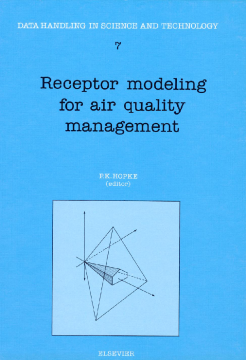
Additional Information
Book Details
Abstract
This book presents the background and application of receptor models for the source identification and quantitative mass apportionment of airborne pollutants. Over the past decade, receptor models have become an accepted part of the process for developing effective and efficient air quality management plans. Information is provided on the ambient and source sampling and chemical analysis needed to provide the input data for receptor models. Commonly used models are described with examples so that the air quality specialist can see how these models are applied. Recent advances in several areas of the field are presented as well as the perspective of both U.S. Federal and State level air quality managers on how these models fit into the development of a management plan.
The aim of the book is to provide a practical guide to persons who may be given the task of implementing receptor modeling as a part of some air quality management problem. The intention of all the chapter authors is to furnish both the basic information needed to begin doing receptor modeling as well as some insight into some of the problems related to the use of these models. These tools like any others used in solving complex technological problems are not a panacea, but do represent powerful aids in data analysis that can lead to insights as to how an airshed functions and thus, to effective and efficient air quality management strategies.
Those already using receptor modelling will find its up-to-date descriptions of the techniques and their applications of great value and those working in air pollution management who do not use receptor modelling will find much of interest, and may even be tempted to experiment with this powerful tool.
Trends in Analytical Chemistry
